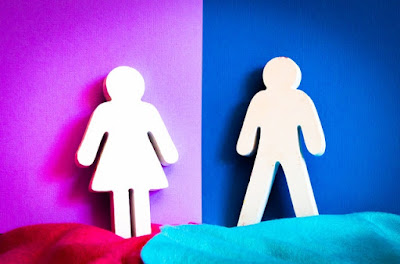Gender - A Cultural Construct

Photo Credit: pexels.com
The Codes of Gender is a film on the sociologist
Erving Goffman’s view of advertising and how cultural norms for gender are amplified
in the realm of advertising. The film’s goal is explaining how gender is a cultural
construct and that advertising is the most concentrated versions of what a male
or female should be. This film is narrated by Sut Jhally, who is a professor of
communication at the University of Massachusetts Amherst. Professor Jhally proclaims
that “…my focus is advertising and consumer culture, I am broadly concerned
with ideology, consciousness, and politics” (University of Massachusetts
Amherst). The film follows these ideals by asking the audience to realize how
advertisement is the biggest purveyor of what we consider masculine or feminine.
Femininity
 |
| Photo Credit: pexels.com |
Masculinity
 |
| Photo Credit: pexels.com |
shown in strong and powerful poses. Where women seem detached from the things around them, men are shown as fully aware of what is going on and active in their environment. Advertisers are very careful in their presentations of men to make sure they are not seen as gay. They must walk a thin line between showing the men as sexy and heterosexual. This is often done by adding women to the picture in a sexually available way to dispel any feeling of homosexuality in the photo.
The Code of Hairstyles
 |
| Photo Credit: pexels.com Made with Adobe Spark |
Jodi Manning, a student at Western Connecticut State
University, did a study on The Sociology of Hair:Hair Symbolism Among College Students where students were randomly shown
images of different hairstyles and were asked to use the hairstyles to “…respond
to questions about the stimuli that were designed to reveal views about
personality traits and physical attributes, including: confidence, happiness,
and trustworthiness, degree of maintenance (e.g. high or low maintenance)…”
(Manning, 2). The study found that most of the participants thought that the
blonde females were “more fun” and “more confident” while brunettes were
considered “plain”. Manning’s findings were correct that “…the stereotypes of hair
have become universal symbols which make up a social language that is commonly
accepted in society” (Manning, 14). Further showing how Goffman’s views on
society still hold true.
Works Cited:
Dhaliwal, Sharan. These Intimate Portraits Examine How
Hair Connects to Gender Identity, VICE, 25 Oct. 2018, www.vice.com/en/article/yw983m/hair-portraits-gender-identity-women.
Manning, Jodi (2010) "The Sociology of Hair: Hair
Symbolism Among College Students," Social Sciences Journal: Vol. 10:
Iss. 1, Article 11. Available at: https://repository.wcsu.edu/ssj/vol10/iss1/11.
Media Education Foundation. (2009). The Codes of Gender.
https://webster.kanopy.com/video/codes-gender.
University of Massachusetts Amherst. Department of Communication. (2021). https://www.umass.edu/communication/people/profile/sut-jhally.


Wow. You are so right about the haristyles. I totally forgot about that. More and more I dig into this topic, I am realizing that how gender is playing a huge role in our society. Thank you for an awesome informative post!
ReplyDeleteYour reference to the code of hairstyles is very thought provoking. Though I do not personally view men with long hair as lazy or women with short hair as masculine, I believe opinions can vary greatly and are influenced by the persons sex and age. Without hesitation, I know several older men who would agree that a man with long hair is feminine and a woman with short hair is most likely lesbian. I do agree with the study however, that the color of hair of a female can be code for her lifestyle in that blondes have been viewed as having more fun that brunettes (though having been both blonde and brunette...I can't say that hair color changed my level of "funness").
ReplyDeleteTeagen,
ReplyDeleteReally good application of the concepts from the film to hairstyles. When we pause and reflect on our world, we can identify numerous hidden rules that ultimately shape our views and behaviors. This really, then, gives Foucault's idea validity.